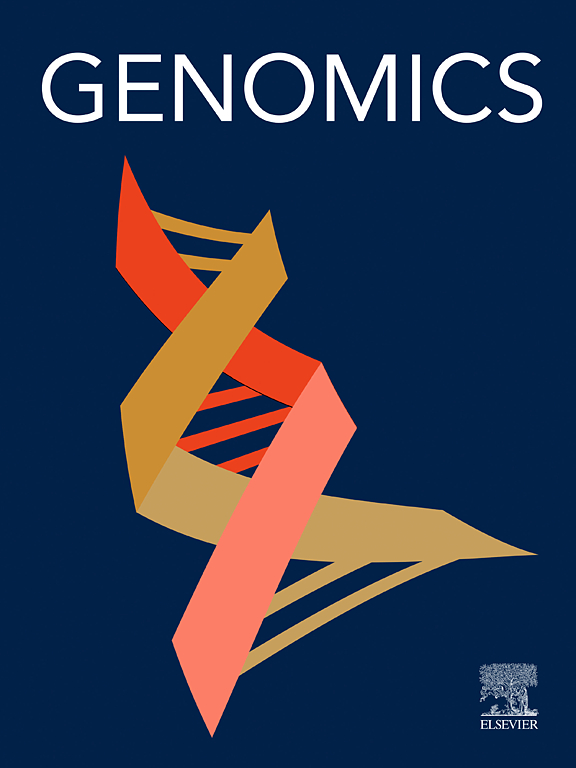MiR-100-5p作为手臂振动病的生物标志物:通过抑制血管生成介导发病机制。
IF 3.4
2区 生物学
Q2 BIOTECHNOLOGY & APPLIED MICROBIOLOGY
引用次数: 0
摘要
手臂振动病(HAVD),又称职业性雷诺病,是一种可引起指尖微循环损伤的职业病,可能导致严重的血管和神经损伤。虽然had已被定义为一种外周血管损伤疾病,但其全面的疾病机制-跨越分子驱动因素,病理生理级联反应和临床可操作的生物标志物-基本上仍未阐明。我们的研究使用miRNA测序(miRNA-seq)来研究与暴露于手传播振动的工人相比,had患者miRNA表达的差异。在体外,我们利用人脐静脉内皮细胞(HUVECs)来探索miR-100-5p在内皮细胞功能障碍中的作用。我们的研究结果显示,在had患者中有36个mirna上调,2个mirna下调。值得注意的是,miR-100-5p和miR-4735-5p的差异表达最为显著。miR-100-5p识别手传振动暴露工人与健康个体的曲线下面积(AUC)为0.9906,识别had的AUC为0.9922。这两种mirna联合作为had的诊断标记物具有较高的AUC、较高的敏感性和特异性,具有很大的潜力。此外,miR-100-5p可能通过VEGFA/VEGFR途径抑制血管细胞的血管生成,从而介导had的病理,而这可能通过降低TRIB2表达和抑制p38 MAPK信号通路来调节。本文章由计算机程序翻译,如有差异,请以英文原文为准。
MiR-100-5p as a biomarker in hand-arm vibration disease: Mediating pathogenesis through angiogenesis suppression
Hand-arm vibration disease (HAVD), also known as occupational Raynaud's disease, is an occupational disease that can cause injuries to the microcirculation in the fingertips, might leading to severe vascular and neurological damage. While HAVD has been defined as a peripheral vascular injury disorders, its comprehensive disease mechanisms—spanning molecular drivers, pathophysiological cascades, and clinically actionable biomarkers remain substantially unelucidated. Our study has used miRNA sequencing (miRNA-seq) to investigate the differential expression of miRNAs in HAVD patients compared to workers exposed to hand-transmitted vibration. In vitro, human umbilical vein endothelial cells (HUVECs) have been utilized to explore the role of miR-100-5p in endothelial cell dysfunction. Our results reveal that 36 miRNAs were upregulated and 2 miRNAs were downregulated in HAVD patients. Notably, miR-100-5p and miR-4735-5p exhibited the most significant differential expression.The area under the curve (AUC) for miR-100-5p in distinguishing hand-transmitted vibration-exposed workers from healthy individuals was 0.9906, while its AUC for identifying HAVD was 0.9922. The combination of those two miRNAs as the diagnostic marker of HAVD showed great potential has higher AUC, with high sensitivity, and specificity. Furthermore, miR-100-5p might mediate the pathology of HAVD by inhibiting vascular cell angiogenesis via VEGFA/VEGFR pathway, which could be regulated by decreased TRIB2 expression and inhibition of the p38 MAPK signaling pathway.
求助全文
通过发布文献求助,成功后即可免费获取论文全文。
去求助
来源期刊

Genomics
生物-生物工程与应用微生物
CiteScore
9.60
自引率
2.30%
发文量
260
审稿时长
60 days
期刊介绍:
Genomics is a forum for describing the development of genome-scale technologies and their application to all areas of biological investigation.
As a journal that has evolved with the field that carries its name, Genomics focuses on the development and application of cutting-edge methods, addressing fundamental questions with potential interest to a wide audience. Our aim is to publish the highest quality research and to provide authors with rapid, fair and accurate review and publication of manuscripts falling within our scope.
 求助内容:
求助内容: 应助结果提醒方式:
应助结果提醒方式:


